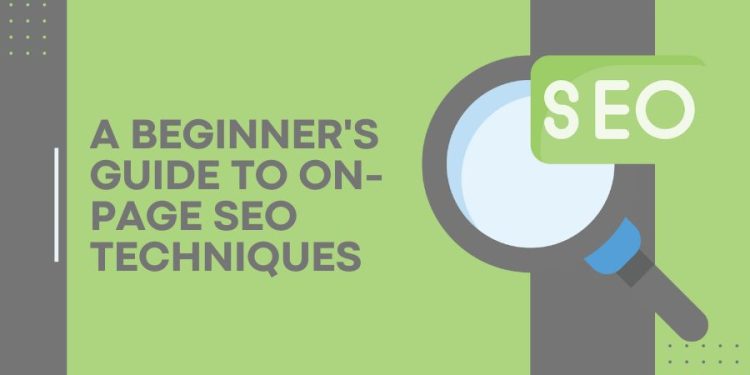Search Engine Optimization (SEO) is crucial for improving your website’s visibility and ranking on search engine results pages (SERPs). On-page SEO techniques focus on optimizing individual web pages to make them more search-engine friendly. In this beginner’s guide, we’ll explore some essential on-page SEO techniques to help you boost your website’s organic traffic and rankings.
On-page SEO optimization services encompass various strategies aimed at improving elements directly within your website to enhance its relevance and authority in search engine algorithms. These strategies include optimizing meta tags, headings, and content structure, ensuring proper keyword placement and density, improving internal linking, and enhancing user experience factors such as page speed and mobile responsiveness. By implementing these techniques effectively, businesses can improve their website’s search engine rankings, attract more organic traffic, and ultimately achieve better online visibility and success. If you’re looking to optimize your website for search engines and maximize your online presence, investing in on-page SEO optimization services is essential for long-term growth and success in today’s digital landscape.
1. Keyword Research
Keyword research is the foundation of on-page SEO. Start by identifying relevant keywords and phrases that your target audience is likely to use when searching for content related to your website. Use keyword research tools like Google Keyword Planner, SEMrush, or Ahrefs to discover high-volume keywords with low competition.
2. Optimize Title Tags
Title tags are HTML elements that specify the title of a web page. They appear as the clickable headline in search engine results. Optimize your title tags by including your target keyword near the beginning and making them compelling to encourage clicks. Keep the title tag length within 50-60 characters to ensure it displays correctly in SERPs.
3. Meta Descriptions
Meta descriptions provide a brief summary of the content on a web page and appear below the title tag in search results. While meta descriptions don’t directly impact rankings, they influence click-through rates. Write descriptive meta descriptions that include relevant keywords and entice users to click on your link.
Also read:- How Digital Marketing Transforms Businesses in Dubai?
4. URL Structure
Create SEO-friendly URLs that are descriptive, concise, and contain relevant keywords. Avoid using dynamic parameters and unnecessary characters in your URLs. A clean and readable URL structure not only improves user experience but also helps search engines understand the content of your page.
5. Headings (H1, H2, H3)
Use headings (H1, H2, H3, etc.) to structure your content logically and improve readability. Include your target keyword in the main heading (H1) and use subheadings (H2, H3) to break down the content into sections. Headings not only make your content more organized but also help search engines understand the context of your page.
6. Optimize Content
Create high-quality, relevant content that provides value to your audience. Incorporate your target keyword naturally throughout the content, including in the first paragraph, subheadings, and meta tags. Aim for comprehensive, well-researched content that addresses the user’s search intent and answers their queries.
7. Image Optimization
Optimize images on your website by using descriptive file names and alt tags that include relevant keywords. Properly optimized images can improve your website’s visibility in image search results and enhance the overall user experience.
8. Internal Linking
Internal linking involves linking to other pages within your website. Use internal links strategically to guide users to related content and distribute link equity throughout your site. Internal linking not only improves navigation but also helps search engines discover and index your pages more efficiently.
Related read:- How to Get Started with SEO: A Beginner’s Guide
9. Mobile-Friendliness
Ensure that your website is mobile-friendly and optimized for various devices and screen sizes. With the increasing use of smartphones for browsing, mobile-friendliness has become a crucial ranking factor. Use responsive design, optimize loading times, and prioritize user experience on mobile devices.
10. Page Speed Optimization
Page speed is another critical factor that affects both user experience and search engine rankings. Optimize your website’s loading speed by compressing images, minifying CSS and JavaScript files, enabling browser caching, and using content delivery networks (CDNs). Faster-loading pages are more likely to rank higher in search results.
Conclusion
On-page SEO techniques play a vital role in improving your website’s visibility, relevance, and user experience. By implementing these beginner-friendly strategies, you can optimize your web pages for search engines and attract more organic traffic. Remember to focus on creating high-quality content, using relevant keywords, and providing a seamless user experience to achieve long-term success with on-page SEO.








